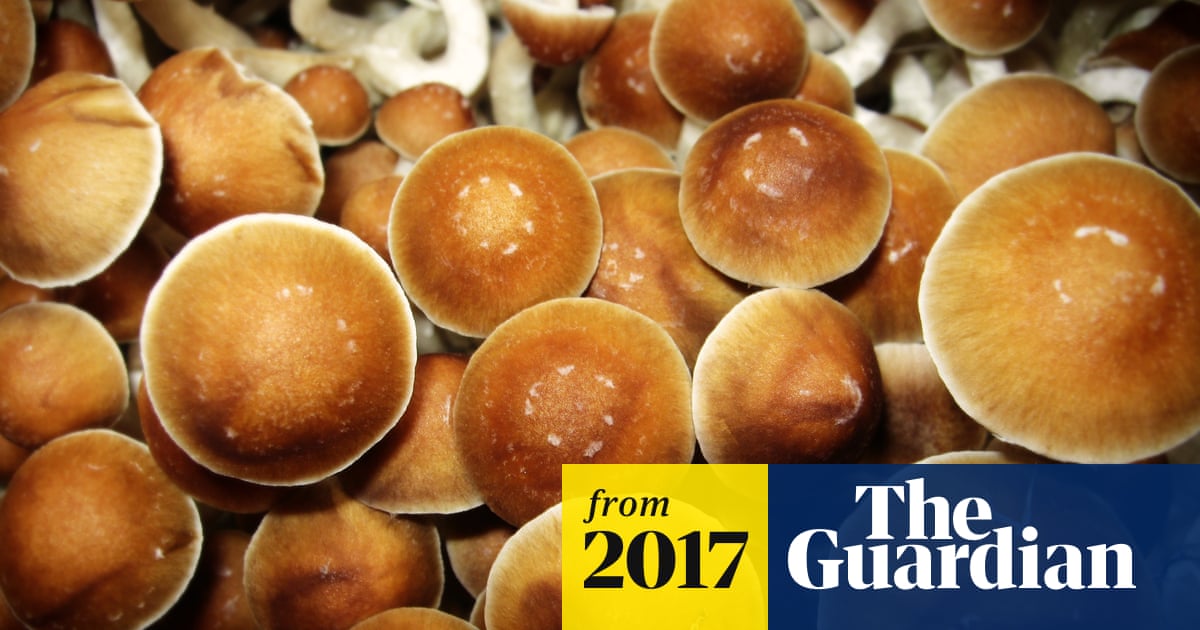People taking mushrooms in 2016 needed medical treatment less than for MDMA, LSD and cocaine, while one of the riskiest drugs was synthetic cannabis
Mushrooms are the safest of all the drugs people take recreationally, according to this year’s Global Drug Survey.
Of the more than 12,000 people who reported taking psilocybin hallucinogenic mushrooms in 2016, just 0.2% of them said they needed emergency medical treatment – a rate at least five times lower than that for MDMA, LSD and cocaine.
“Magic mushrooms are one of the safest drugs in the world,” said Adam Winstock, a consultant addiction psychiatrist and founder of the Global Drug Survey, pointing out that the bigger risk was people picking and eating the wrong mushrooms.
“Death from toxicity is almost unheard of with poisoning with more dangerous fungi being a much greater risk in terms of serious harms.”
Global Drug Survey 2017, with almost 120,000 participants in 50 countries, is the world’s biggest annual drug survey, with questions that cover the types of substances people take, patterns of use and whether they experienced any negative effects.
Overall, 28,000 people said they had taken magic mushrooms at some point in their lives, with 81.7% seeking a “moderate psychedelic experience” and the “enhancement of environment and social interactions”.
Magic mushrooms aren’t completely harmless, notes Winstock. “Combined use with alcohol and use within risky or unfamiliar settings increase the risks of harm most commonly accidental injury, panic and short lived confusion, disorientation and fears of losing one’s mind.”
In some cases people can experience panic attacks and flashbacks, he added, so his advice for people thinking about taking them is to plan “your trip carefully with trusted company in a safe place and always know what mushrooms you are using”.
Even bad trips can have positive outcomes, according to a separate piece of research carried out by Roland Griffiths and Robert Jesse at Johns Hopkins Medicine.
In their 2016 paper they surveyed almost 2,000 individuals about their single most psychologically difficult or challenging experience with magic mushrooms. Of that group, 2.7% received medical help and 7.6% sought treatment for enduring psychological symptoms. Nevertheless 84% of those surveyed said they benefitted from the experience.
“In a way, it’s not really so surprising,” said Griffiths in a Q&A about the paper. “When we look back on challenging life events we wouldn’t choose, like a bout with a major disease, a harrowing experience while rock-climbing, or a painful divorce, sometimes we feel later that the difficult experience made us notably stronger or wiser. We might even come to value what happened.”
Outside of recreational use, magic mushrooms have been shown in clinical trials to treat severe depression and anxiety.
Of the almost 10,000 LSD consumers who took part in GDS 2017, around 1% of them – 95 individuals – reported seeking emergency medical treatment, five times more than those who took magic mushrooms.
“LSD is such a potent drug,” said Winstock. “It’s so difficult to dose accurately when tabs you buy vary so widely. It’s easy to take too much and have an experience beyond the one you were expecting.”
He added that drug manufacturers are starting to incorporate novel super potent psychedelics such as NBOMe into tabs, which adds to the risk. He suggests making efforts to get a “reliable, trustworthy supply” and “always take a tiny dose to start”, waiting a few hours before taking more.
One of the riskiest drugs, according to the survey, was synthetic cannabis. Over one in 30 of users in the sample sought emergency medical treatment – the highest of any drug studied except crystal methamphetamine. That rises to one in 10 among people who use the drug at least 50 times per year. These figures echo the data from the previous year’s report.
Synthetic cannabis, sold as “spice” and “black mamba”, is an umbrella term for hundreds of chemical compounds that mimic the effects of THC, the active ingredient of cannabis, in the brain. These synthetic forms are often extremely potent, cheap and odourless, which has led to them flooding the market in the US and Europe. They’ve been particularly popular in prisons in the UK, where they’ve had a “devastating impact” and have been linked to deaths, serious illness and episodes of self-harm among inmates.
Brad Burge from the Multidisciplinary Association for Psychedelic Studies (Maps) urged caution on relying on people’s self reports for data as people often take multiple drugs at the same time, so you can’t be sure which one is causing the problem.
He also highlighted that seeking emergency medical treatment means different things for different drugs. With a drug such as heroin, a trip to the emergency room is a life-or-death situation requiring resuscitation and medication. With LSD or mushrooms, there is no toxicity and the effects wear after a few hours.
“There is no known lethal dose for LSD or pure psilocybin,” he said.
Both Winstock and Burge said that the findings indicate a need for drug policy reform, with a focus on shifting psychedelics off the schedule one list of the most dangerous controlled substances.
“Drug laws need to balance the positives and problems they can create in society and well crafted laws should nudge people to find the right balance for themselves,” said Winstock.
“People don’t tend to abuse psychedelics, they don’t get dependent, they don’t rot every organ from head to toe, and many would cite their impact upon their life as profound and positive. But you need to know how to use them.”
Study finds mushrooms are the safest recreational drug – The Guardian
